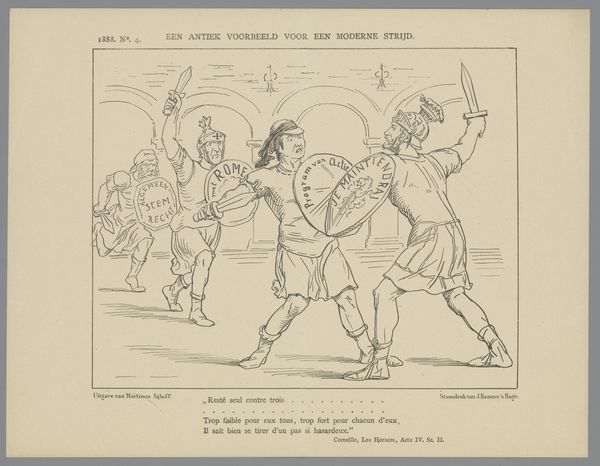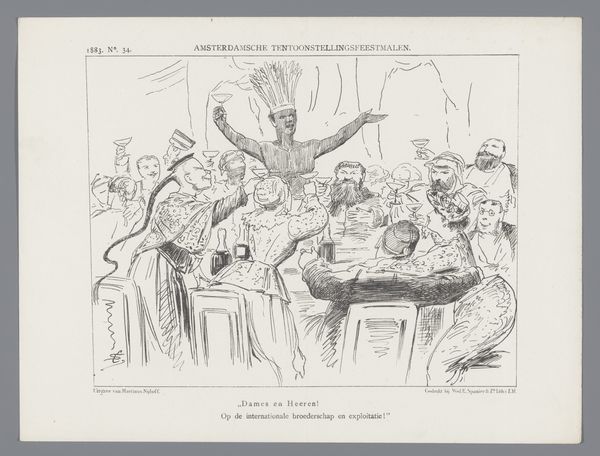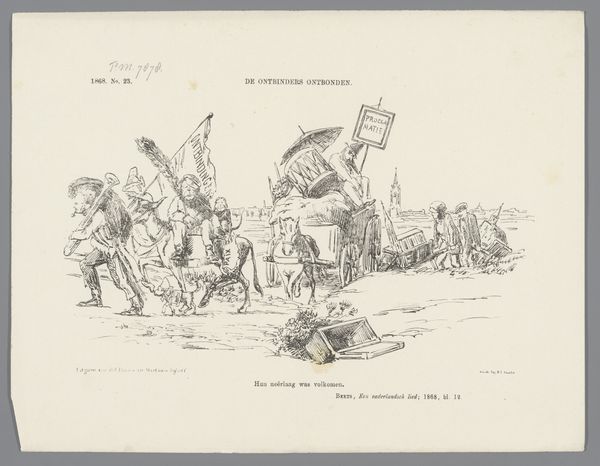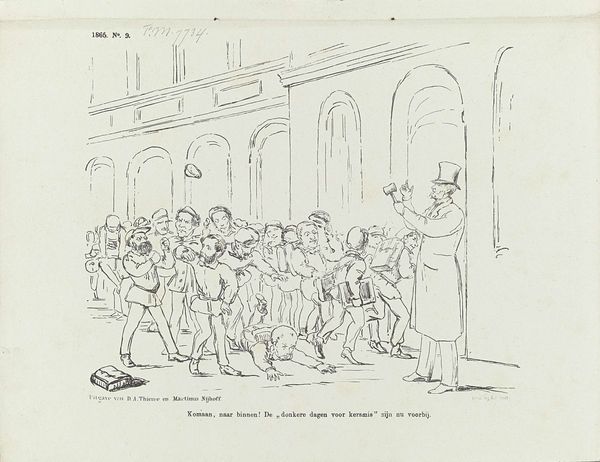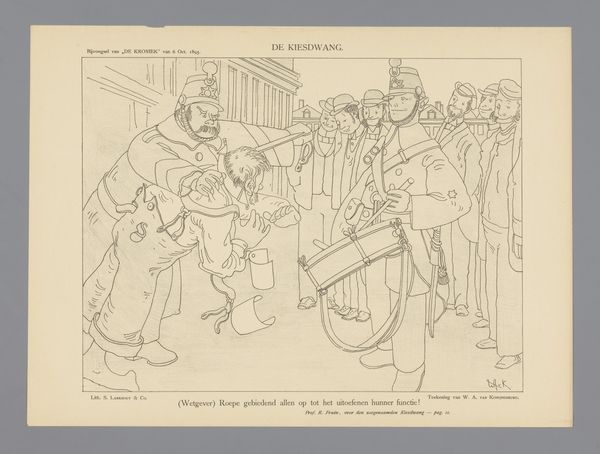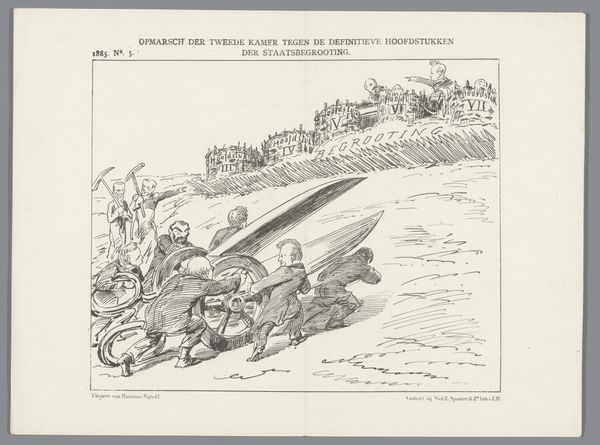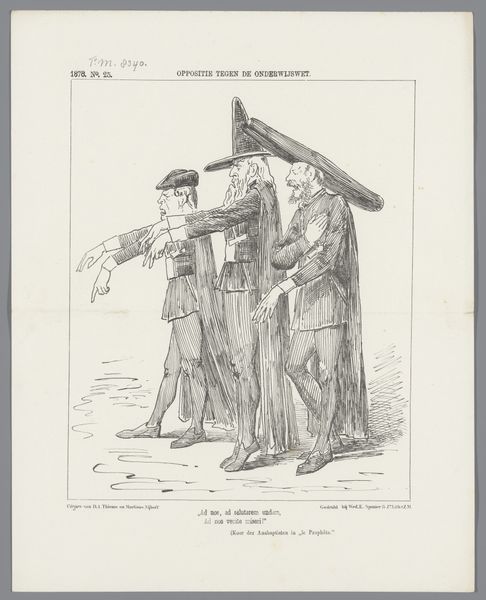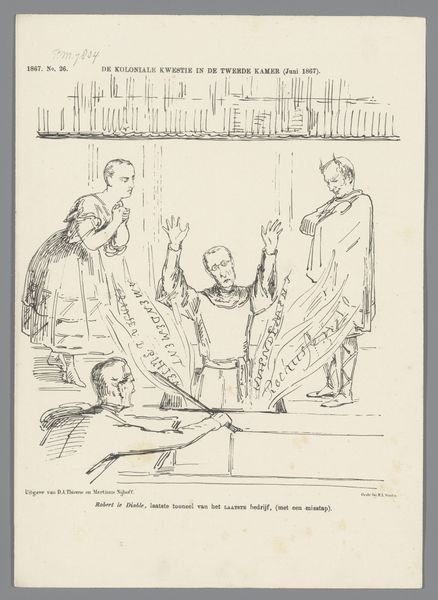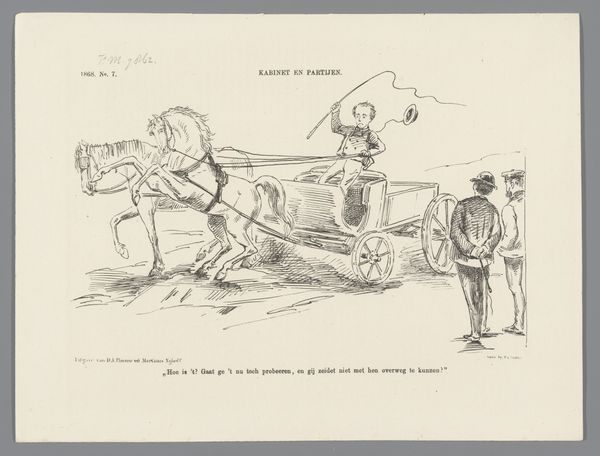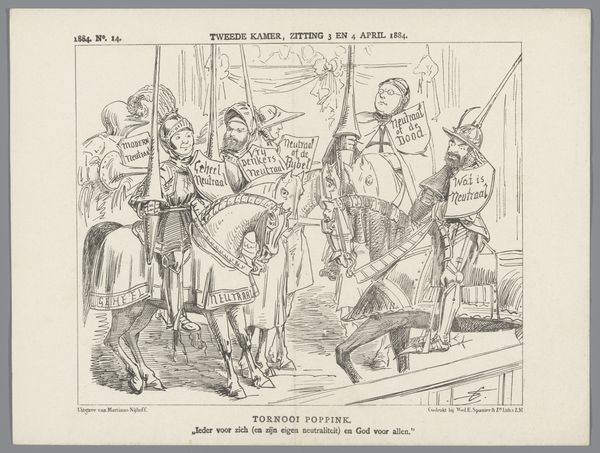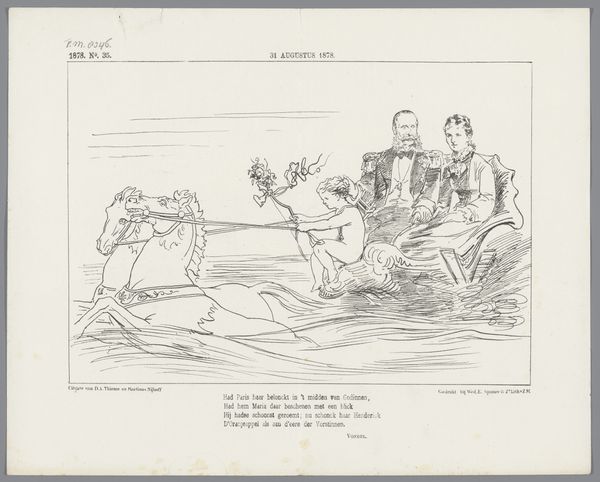
drawing, ink, pen
#
portrait
#
drawing
#
caricature
#
ink
#
group-portraits
#
pen
#
genre-painting
Dimensions: height 215 mm, width 275 mm
Copyright: Rijks Museum: Open Domain
Editor: So, this drawing from 1886 is titled "Spotprent met Heemskerk als croupier," and it seems to be ink on paper. It looks like a bunch of men gambling at a table, almost like a political cartoon. It's pretty detailed, but something feels…off. What do you see in this piece? Curator: This is a fascinating glimpse into the political climate of the time. The artist uses caricature to critique the power dynamics inherent in Dutch politics, framing it within a familiar setting of gambling. Look at who's at the table, who seems to hold the power as the dealer—Heemskerk—and consider what 'the house' might represent here. Who benefits, and at whose expense? Editor: So, Heemskerk, the croupier, is the key figure. And it's not just a random gathering; it's a depiction of specific power relations in Dutch society? What do you make of the composition itself? Curator: Exactly. The crowded table signifies the high stakes, perhaps suggesting political maneuvering and competition. The text translates to "The gambling bank restored in the Netherlands", and then below, the croupier announces "Make your play, Gentlemen!" The hammer poised above the central figure hints at the manipulation inherent in this "restoration," indicating it benefits certain individuals, and the political status of women and people of color are notably absent, further demonstrating its partiality. This makes one consider the question of representation and who has access to the table of power. Editor: It's almost like the artist is suggesting that the political process is rigged, that the "game" is not fair. Curator: Precisely! It challenges the viewer to question the very foundations of power and consider how societal structures affect various social groups. What do you think that tells us about its value as a political statement at the time, or even for today? Editor: I see how this caricature can reveal so much about the social anxieties and inequalities present in 19th century Netherlands. I will look closer at similar images and start to explore the context. Thanks! Curator: Absolutely! The most resonant artworks provide ways for us to connect to and comprehend not just our histories, but also the continuities and inequities in contemporary culture.
Comments
No comments
Be the first to comment and join the conversation on the ultimate creative platform.
